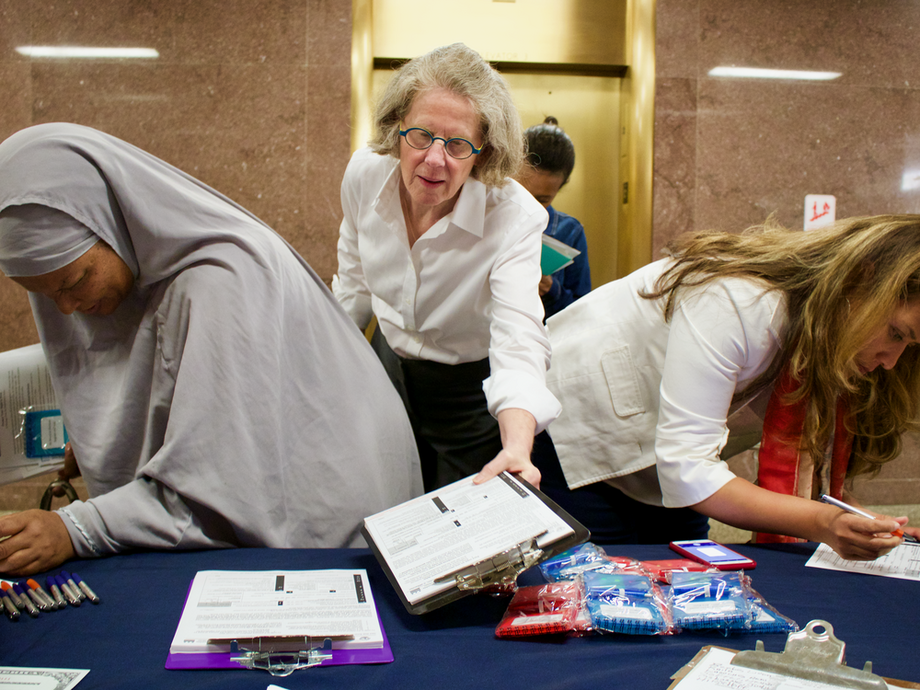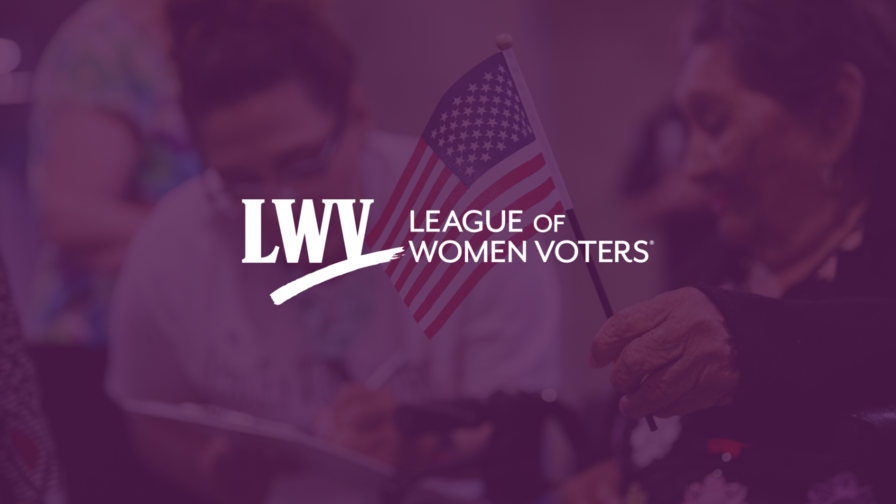What's So Bad About Voter ID Laws?
Voter ID laws have long been debated in the United States. While supporters argue that voter photo ID laws are necessary to prevent voter fraud and ensure the integrity of elections, reality tells a different story. Not only do these measures disproportionately impact Black, Native, elderly, and student voters, but they also fail to effectively address any real issues related to election integrity — the very thing advocates say these measures are designed to do.
In this blog, we'll explore the true nature of voter photo ID laws, examine the arguments supporting them, and look at how they impact voters at the polls from different walks of life.
Support pro-voter initiatives in your community by joining one of the 700+ state and local Leagues.
Voter Photo ID Laws Won’t Prevent Voter Fraud
For many decades, politicians across the country have sounded the alarm about the purported risk of voter fraud and pushed for adopting voter photo ID laws to address this perceived threat. On the surface, this might seem harmless or even sensible. If we use a government-issued photo ID to buy alcohol or rent a hotel room, what’s the harm in asking for a photo ID to cast a ballot? No one wants to have a stranger impersonating them in a voting booth.
The issue with this argument is that time and time again, voter photo ID laws are proven to be ineffective tools to fight voter fraud — in the rare instances it does take place. While voter photo ID laws aim to prevent in-person voter impersonation, an almost non-existent form of voter fraud, other types of voter impersonation are similarly rare and not cause for significant concern. According to the Brennan Center, the rate of in-person voter impersonation is extremely low: only 0.00004% of all ballots cast. It’s worth noting that this rate is even significantly lower than other rare forms of voter fraud, such as absentee ballot fraud, which voter photo ID laws do not address.
Voter fraud is so extremely rare. Out of 250,000,000 votes cast by mail between 2000 and 2020, there were 193 criminal convictions. By those numbers, a person is more likely to be struck by lightning than they are to commit voter fraud. Further, there are already measures in place to detect irregularities and investigate potential cases of voter fraud, making the need for further legislation even smaller.
ID Laws as Voter Suppression
Not only are voter photo ID laws ineffective as means of combating voter fraud, but their main impact is that they promote voter suppression.
The use of restrictive voting laws to disenfranchise minority voters can be traced back to the Jim Crow era, when many states employed various tactics — including literacy tests, poll taxes, and extralegal measures such as violence and intimidation — to prevent Black Americans from voting. Following the enactment of the Voting Rights Act (VRA) in 1965, many of these tactics were outlawed, but efforts to restrict voting access persisted, including implementing voter ID laws.
Support our work to make voting more accessible to all people.
Restrictive voting measures are designed to maintain the power structures that benefit those in control — largely white legislators — and their legacy is still felt today. In 2013, the Supreme Court handed down a landmark decision in Shelby County v. Holder, invalidating Section 5 of the VRA. Section 5 required certain states and jurisdictions with a history of racial discrimination in voting to obtain federal approval, or "preclearance," before making any changes to their voting laws or procedures. The Department of Justice blocked over 700 voting changes they found to be discriminatory from 1982 through the VRA’s 2006 reauthorization. Since the Shelby County v. Holder decision, many states have enacted new voting restrictions centered around voter photo IDs.
For example, Texas didn’t even sleep on it — they moved to introduce a strict voter ID law at midnight after the Supreme Court decision was handed down in 2013. That law resulted in the ineligibility of an estimated 608,470 registered voters in Texas, representing a total of about 4.5% of registered voters in the state at the time.
The negative impact of strict voter ID laws is not limited to Black Americans; other marginalized populations also face disproportionate barriers to voting because of these laws. Native American communities, low-income, elderly, and rural voters are disproportionately affected by voter photo ID laws. This is partially because photo IDs aren’t as common as many people assume: 18% of all citizens over the age of 65, 16% of Latino voters, 25% of Black voters, and 15% of low-income Americans lack acceptable photo ID. Elderly and low-income voters may not have the availability, financial resources, or mobility to obtain the necessary identification, and rural voters may face significant barriers to obtaining the necessary documentation due to their geographic isolation. Further, many rural and Native Americans born at home or on reservations and tribal lands lack the mandated paperwork needed to obtain a government-issued ID that fits the legal requirements to vote.
Aside from class and racial discrimination, there are other peculiar ways voter photo ID laws turn voters away from the polls. For example, people who change their last names after marriage or divorce and don’t have a permissible ID that reflects their name on the voter rolls may be unable to cast a ballot. College students are also uniquely impacted by these laws, as their primary form of ID can often be a student ID, which isn’t always accepted as a valid form for voting. In all these cases, voter ID laws deny eligible voters access to the ballot box.

LWV’s Stance on Voter Photo ID Laws
The League of Women Voters supports free, fair, and accessible elections for all eligible Americans, and we oppose efforts to create barriers that block citizens from fully participating in our democracy. Voting is the one time when all citizens have an equal say in our government. Our country was founded on the principle that we are all created equal. Living up to this promise — to provide all citizens with the same freedoms and opportunities — means it is wrong to pass laws that deny eligible American voters the opportunity to participate equally in our democracy.
In combination with the ineffectiveness of voter photo ID laws at preventing the rare instances of voter fraud, the more likely results of voter photo ID laws are voter suppression and reduced turnout among vulnerable populations.
The principle of voter suppression is fundamentally wrong and goes against the values of democracy. Our goal should always be to increase access for eligible voters, not restrict it. For these reasons, LWV does not support voter photo ID laws or any other measures that create unequal and/or unnecessary burdens to voting.
To learn more about voting laws in your community and advocate for a fair and representative democracy, find your local League today!
The Latest from the League
Jefferson City, Mo. — This afternoon, a judge for the Cole County Circuit Court granted a preliminary injunction in our LWV MO and Missouri NAACP v. Missouri lawsuit, which blocks enforcement of several provisions in H.B. 1878 that criminalizes voter engagement activity and distribution of absentee ballot applications conducted by civic engagement groups.
Individual voter challenges occur when a person’s eligibility to vote is questioned. Across the country, ithey have been a vehicle for race- and language-based discrimination, election confusion, and voter suppression.
Eligible voters deserve equal access to register and vote under the law. Increasing the language accessibility of voting materials allows voters to feel confident in voting and become educated and informed as they vote on high-priority issues in their communities. The Expanding the VOTE Act would do just this.
Sign Up For Email
Keep up with the League. Receive emails to your inbox!
Donate to support our work
to empower voters and defend democracy.





